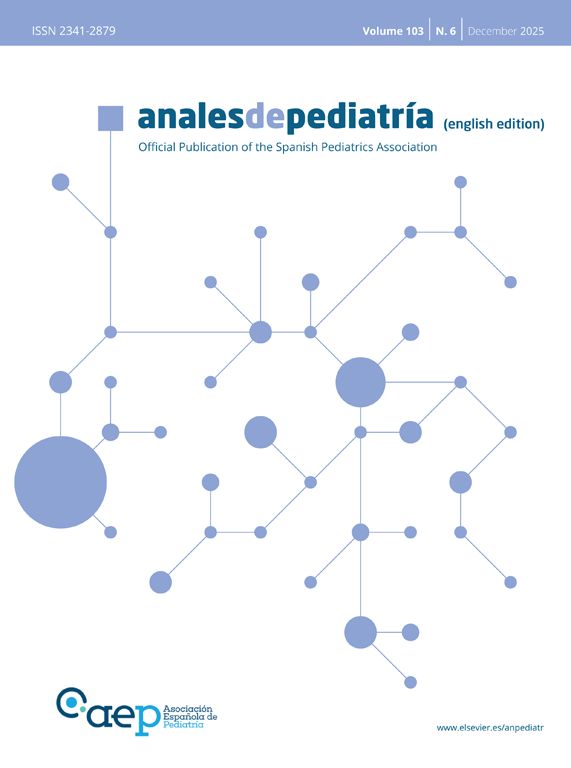A female toddler (2 years) was admitted to the pediatric intensive care unit with severe head trauma after being run over. At admission, she had a Glasgow Coma Scale score of 7, right-sided cervical edema and left-sided hemiparesis. The patient was intubated and evaluated with a full-body CT scan that evinced a linear fracture in the occipital bone and venous thrombosis (right sigmoid sinus), prompting placement of an intracranial pressure sensor. Due to progressive worsening, a transcranial doppler (TCD) ultrasound was performed, with findings indicative of unilateral ischemia and intracranial hypertension, leading to suspicion of internal carotid artery dissection (Fig. 1). This was later confirmed by magnetic resonance imaging (18 h), performed to assess for associated cerebral/medullary damage and the extension of thrombosis.
Transcranial Doppler ultrasound through the transtemporal window at 18 h of admission evincing flow asymmetry between the two middle cerebral arteries (MCAs). (a) Right MCA: minimal systolic and diastolic flows (28 and 14 cm/s), indicative of ischemia. Reduced pulsatility index (PI, 0.6) and resistance index (RI, 0.5). (b) Left MCA: elevated systolic flows (183 cm/s), diastolic flow of 55 cm/s con RI (0.7) and elevated PI (1.39), indicative of intracranial hypertension.
In light of the extension of the infarction, the edema and the signs of intracranial hypertension, the decision was made to rule out endovascular/reperfusion therapy and perform a decompressive craniectomy. Once the patient had stabilized (follow-up CT angiography at 48 h [Fig. 2] and TCD at 96 h [Fig. 3]), she received antiplatelet medication, followed by anticoagulation.
3D vessel reconstruction. (a) Extensive right frontoparietotemporal decompressive craniectomy. Lack of visualization of the cavernous and clinoid segments of right internal carotid artery (ICA) with mild asymmetry of the middle cerebral arteries and the superior and inferior trunks relative to the contralateral side. (b) Digital subtraction angiography of right ICA segment C2 post bifurcation with abrupt tapering and occlusion of the lumen (“flame sign”) consistent with carotid dissection. (c) Normal trajectory and morphology of left ICA.
Transcranial Doppler through the transtemporal window at 96 h of admission showing mild improvement of the right middle cerebral artery (MCA) blood flow with normalization of intracranial hypertension. (a) Right MCA: higher, but still low, systolic and diastolic flows (68 and 32 cm/s). Pulsatility index (PI) of 0.7 and resistance index (RI) of 0.5. (b) Left MCA: normalized systolic flow values (155 cm/s), and diastolic values greater than 86 cm/s with normalized RI (0.58) and PI (0.44).
Internal carotid artery dissection is a leading cause of acute ischemic stroke in children, and it can be traumatic or spontaneous. Early detection allows prompt initiation of appropriate treatment.1 There is little evidence on the use of TCD for diagnosis of internal carotid artery dissection in children.2 An asymmetry in flow velocities greater than 25% between the two middle cerebral arteries and an ipsilateral reduced pulsatility index can raise the suspicion of this condition and indicate performance of urgent CT angiography.3
Sensitive, noninvasive monitoring at the bedside (TCD sonography) can be helpful in raising clinical suspicion and for follow-up.









